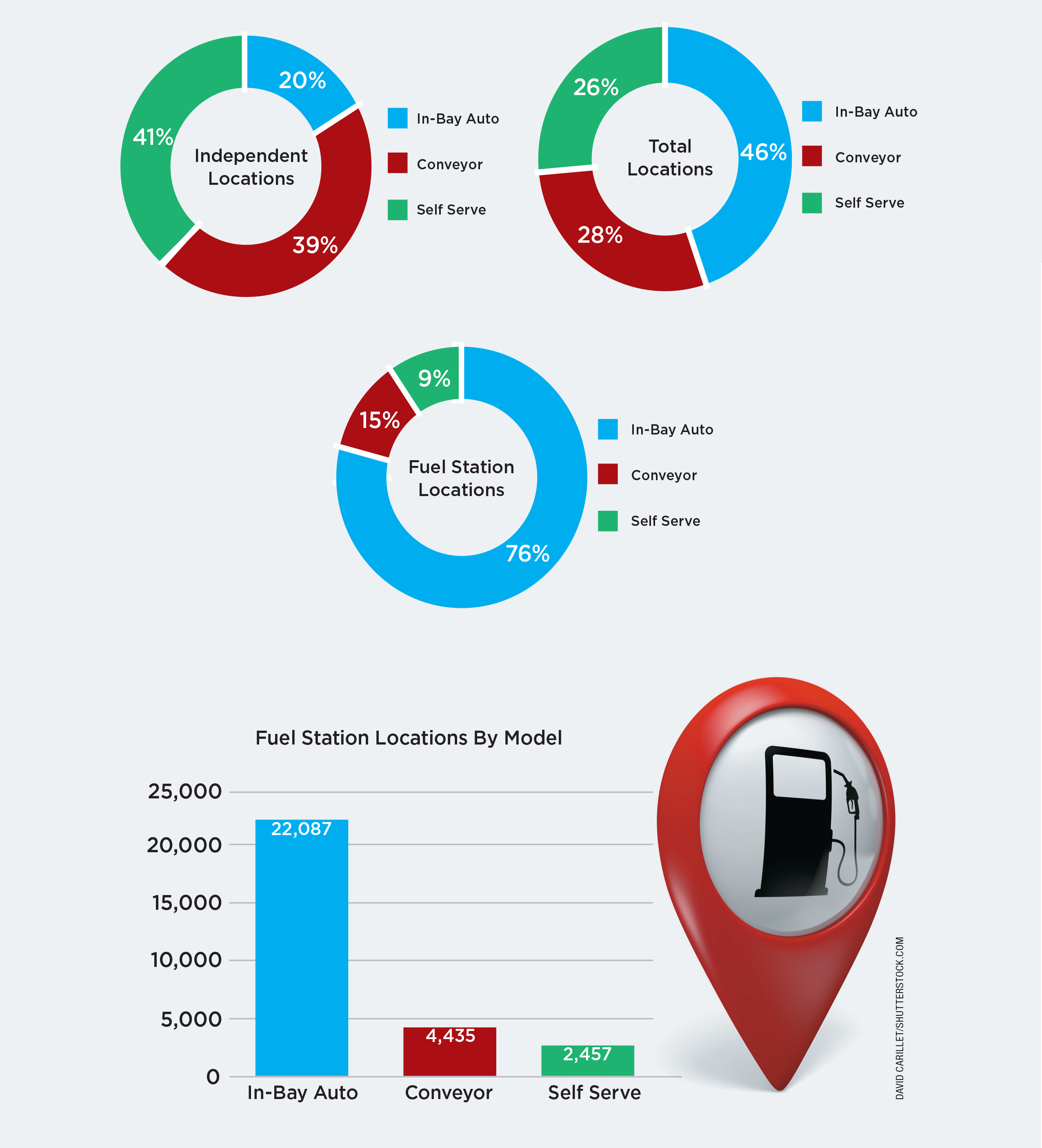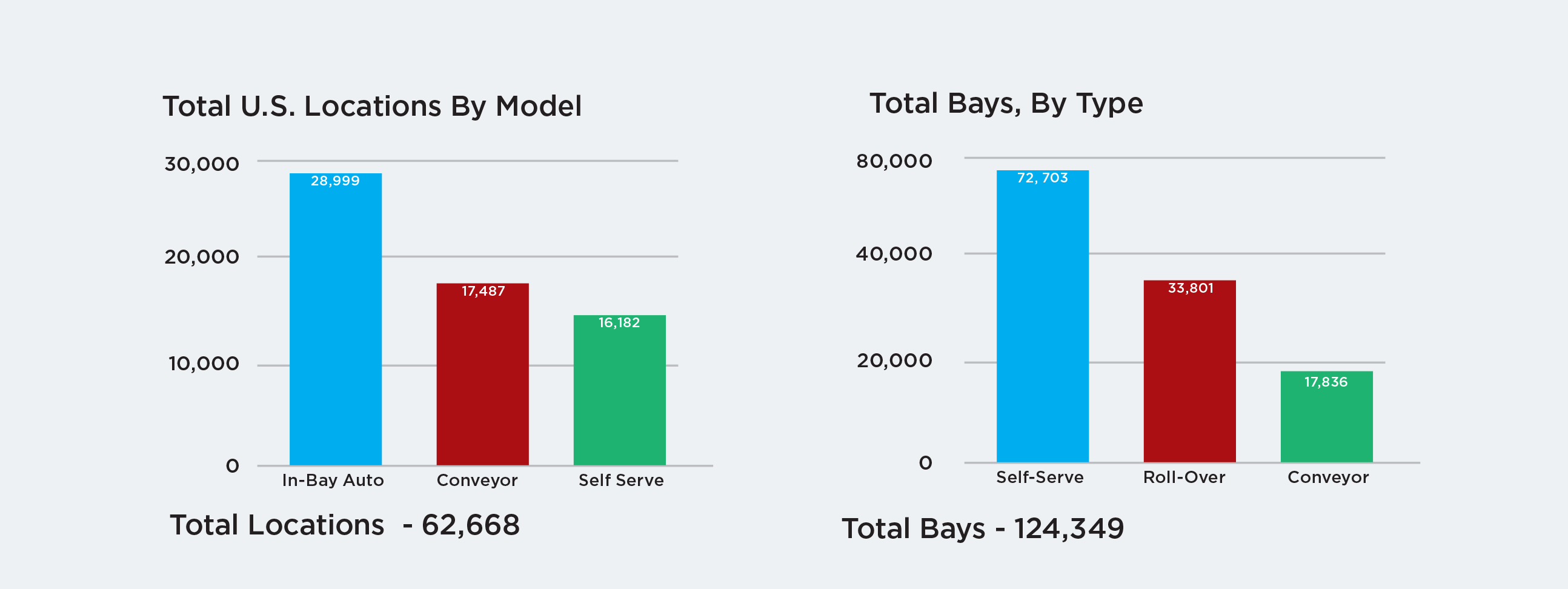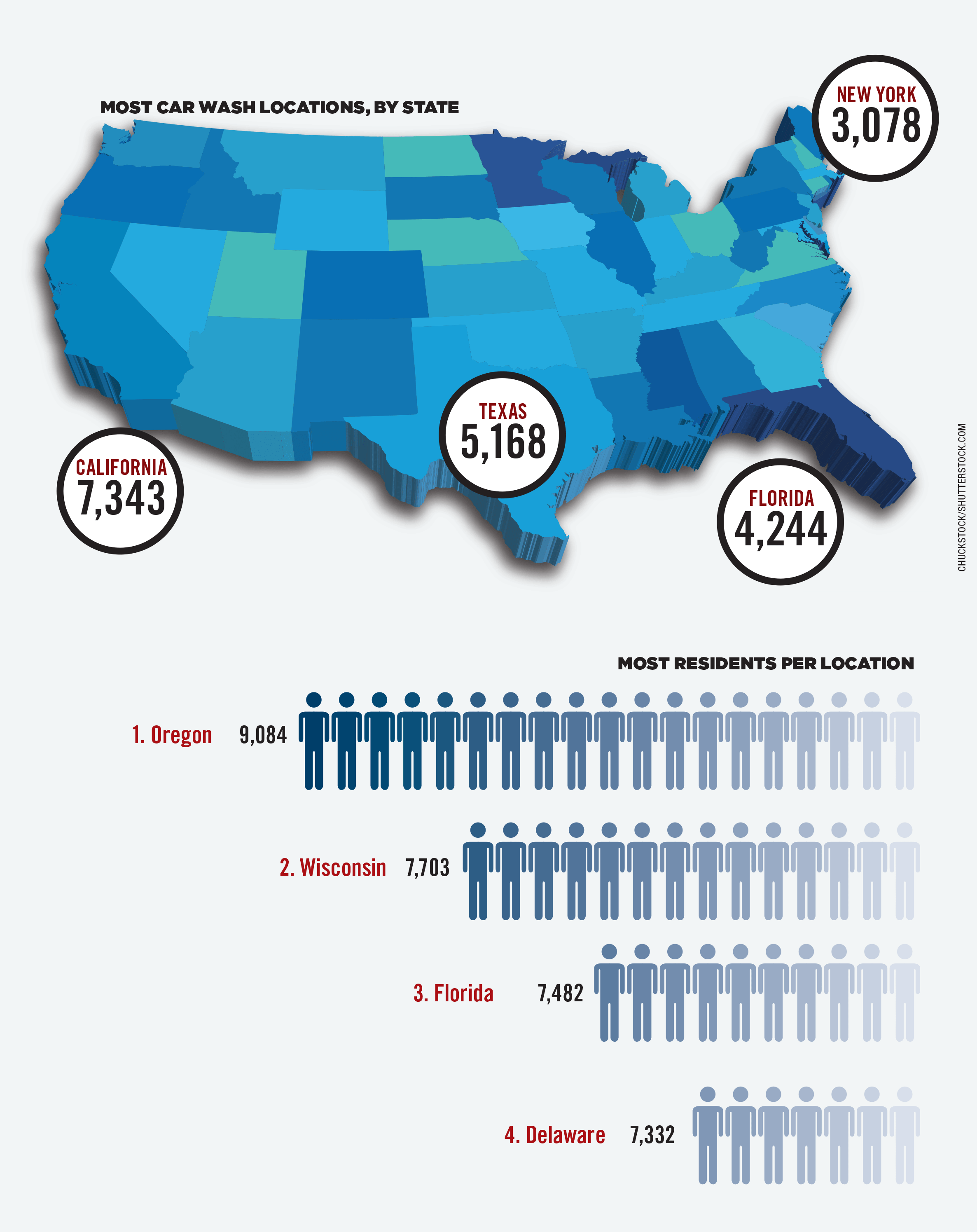The question of “How many car washes exist?” has been a vexing one to answer for most of the industry’s history. The industry has historically been made up of highly fragmented and privately owned businesses, with myriad business models ranging from the independent car wash location to car wash services at rental car facilities to the car washes located at convenience stores.
“Independent car wash locations are relatively easy to describe and find,” said International Carwash Association CEO Eric Wulf. “Car washes existing at fuel stations can be more challenging to research given that those businesses are almost always categorized as fuel or convenience stores first. More difficult still would be counting car wash services that are offered at rental car facilities, detailing shops, fleet management facilities or auto dealerships.”
Recently, though, shifts in the industry along with International Carwash Association’s identification of a unique research group (IHL Group) have made it viable to answer the question, “How many car washes exist in the U.S.?”

IHL Group is a research and advisory firm specializing in the retail industry, with a database of proprietary information relevant to car washing. Together, ICA and IHL developed an approach that would utilize that database, other publicly available information and targeted city mapping in order to create ratios and then estimations for each state.
As part of this effort, 50 cities of varying sizes — Huntington, W.Va. (population of 46,048) to Los Angeles, Calif. (population of 3.9 million) — were selected for car wash location counting using human review of digital maps.

Results were organized in three ways: by state, by type (independent versus fuel site) and by model (conveyor, roll-over or self-service). This research was focused on retail, automated car wash locations.
The report confirms that the professional car wash industry in the U.S. remains highly fragmented, especially among independent sites.
The new research puts that figure into context — those operators represent about 13% of total conveyor locations. The largest U.S. conveyor operator, Mister Car Wash, operates less than 2% of total locations. Compare this to Starbucks, which according to World Coffee Portal, is estimated to equate for 40% of all coffee shops in the U.S.
“As we’ve watched the market in the U.S. start to shift, it’s interesting to see that, while things are changing, the industry remains highly fragmented,” Wulf said. “It’s also interesting to compare the number of car wash locations versus other industries, which is now possible because of this research.”
With approximately 62,000 retail, automated car wash locations, the car wash industry has more than twice the number of supermarkets (26,149 according to Nielsen), but is closer to a third of the size of convenience stores (152,720 according to NACS).

As the professional car wash industry continues to grow, and attract outside capital, monitoring changes to these counts will be increasingly important. ICA plans to update this information on a periodic basis, as is currently done with U.S., European and Australian consumer research and car wash environmental studies.
Additional information can be found at carwash.org.